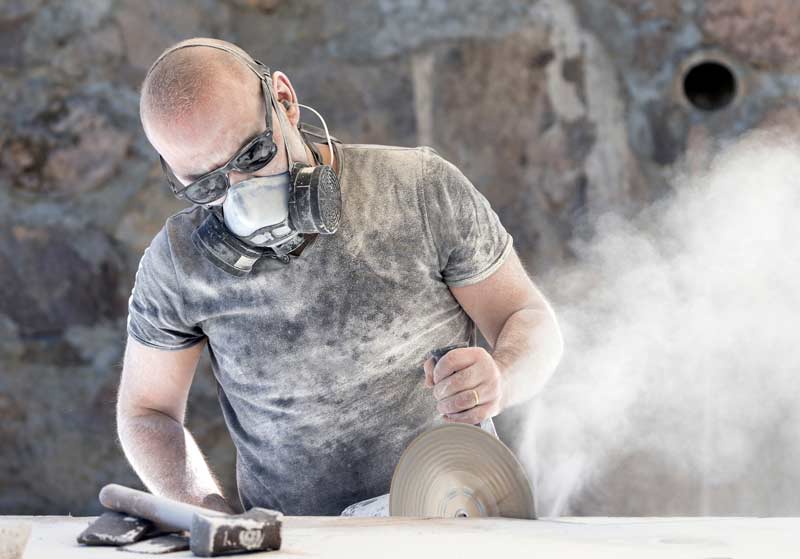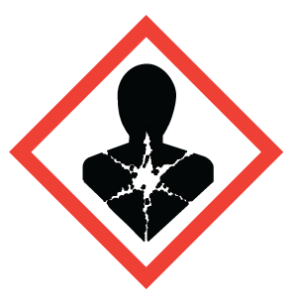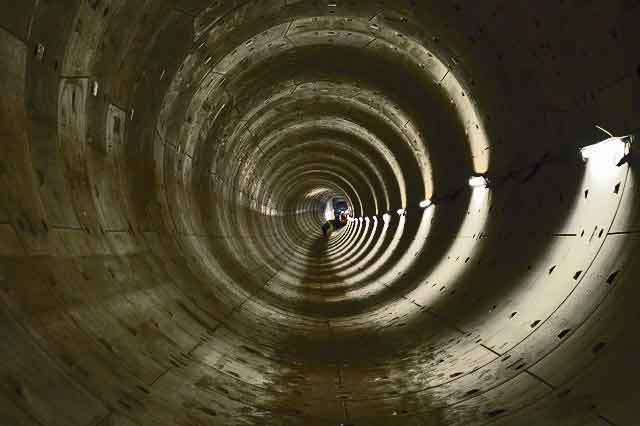Are Quartz Countertops the Asbestos of the 2020s?
Engineered stone, like quartz countertops, has become incredibly popular in kitchens and bathrooms. However, people need to realize that the process of making and installing these quartz countertops can be very hazardous. Recently, Australia took an unusual step by banning manufacturing, supplying, processing, and installing engineered stone.
This information is particularly relevant to me because I recently installed quartz countertops in my house. Although I consider myself safety-conscious, I never thought about the potential risks associated with them.
In this blog post, we’ll investigate the occupational hazards of engineered stone and explore possible solutions.
Asbestos is still the largest killer of workers in North America. Most uses stopped in the 1980s, and it was finally banned Canada-wide in 2018.
What is Engineered Stone?
Engineered stone is a composite material created by binding crushed stone with resin to form a solid surface. It serves as an alternative to natural stone materials such as granite and marble, commonly used for kitchen and bathroom countertops. The most prevalent types of engineered stone contain 90 to 95% crushed quartz, combined with a polymer resin binder and small amounts of decorative materials like pigments and metals. It’s important to note that engineered stone contains significantly more hazardous crystalline silica than natural stone, typically exceeding 90%, while granite contains less than 45%.
Why is Engineered Stone a Problem?
Workers working with engineered stone can develop silicosis, an irreversible lung disease, in as little as four years. Breathing becomes increasingly arduous, and climbing stairs can feel like climbing Mount Everest. The disease progresses even when exposure to the dust is stopped, and there is no cure. The only life-saving option in end-stage silicosis is a lung transplant.
“Continued work with engineered stone poses an unacceptable risk to workers, which is why we recommended a prohibition on using all engineered stone.”
CEO of SafeWork Australia
What Causes Health Issues in Engineered Stone Workers?
The high crystalline silica content in engineered stone poses a significant risk. When the engineered stone is cut, shaped or polished, a fine dust containing silica is released into the air. Inhaling these tiny silica particles irreversibly damages the lungs, leading to silicosis, cancer, and autoimmune diseases. Some researchers believe that the resins or other ingredients used in the stone may intensify the detrimental effects of silica.
The industry’s high dust levels are a significant concern, especially in small businesses where safety measures may be lacking due to limited awareness, health and safety expertise, and resources for dust control technologies.
Make sure you know about the hazards of your work by taking our free WHMIS training and reading about the 9 most toxic chemicals you use every day.
What Can Workers Do?
If you work with engineered stone, take the following steps:
- Talk to your supervisor/manager/ employer immediately and ensure aggressive dust control measures are in place.
- Discuss the issue with your health and safety representative.
- Get regular medical check-ups with a chest X-ray.
- Contact the Ministry of Labour or other governmental agencies to determine the required controls and procedures in your location.
- Consult with your local health and safety association or safety consultant to ensure the dust exposures are as low as possible.
- Ask for training in the hazards and controls for silica dust.
- Wear a respirator (mask) when working with these materials. See here for a great video on how to fit test a respirator.
- Review the health and safety regulations for silica exposure in your jurisdiction and ensure you follow them. See below:
Should You Buy an Engineered Stone Countertop, Such as a Quartz Countertop?
The decision is all yours, but if you prioritize products that do not harm workers and are environmentally friendly, natural stone like granite is a safer alternative.
Will Quartz Countertops be Banned in Canada?
It seems unlikely that a ban will be implemented in Canada soon. Asbestos, known to be the most significant occupational killer in Canada, was only banned in 2018. Provincial regulations are in place to control exposure to crystalline silica in the workplace. However, given that most of the companies involved in this line of work are small, lack sufficient safety resources and will likely never come to the attention of government authorities, it may be worth considering a ban. I’m interested in hearing your thoughts on this matter – please share your comments below.
Are Quartz Countertops the Asbestos of the 2020s?
Asbestos was extensively used in the past for various industrial and commercial purposes, and it was present in thousands of products across the globe. Unfortunately, asbestos fibres are easily crumbled or pulverized, leading to their release into the air, which can cause severe respiratory diseases such as asbestosis, lung cancer, and mesothelioma. However, engineered stone, which contains crystalline silica, poses a relatively lower risk as it only releases silica particles when cut, shaped, or polished. That being said, we cannot overlook the potential hazards, and it is crucial that everyone in the industry undergoes proper training and that strict controls are put in place during the manufacturing and installation processes. While quartz countertops may not be the asbestos of the 2020s, we must remain vigilant and take every precaution to ensure the safety of workers and consumers.









thank for information
This is quite alarming to hear. I’ve worked with exclusively Engineered Quartz for the last 7 years. I started working with Natural stone 20 years ago. The Quartz industry aggressively went after the Natural Stone Industry since it started in the early to mid 2000’s. They started a media campaign saying that Granite emits unsafe levels of Radon, even the New York Times picked up the story. The Radon issue was severely exaggerated, with few stones even remotely giving higher Radon emissions. The Quartz countertops give off an unnatural smell when being cut and is actually flammable due to the resin content. The dust is so fine even walking around the shop in the morning kicks up a fine fine dust and it takes on a coating quality. I’ve become aware of the risks and am in the process of getting my lungs checked out next week.
Thank you for your insites. Please take care and get the word out about the dangers of cutting, grinding and polishing of this product.